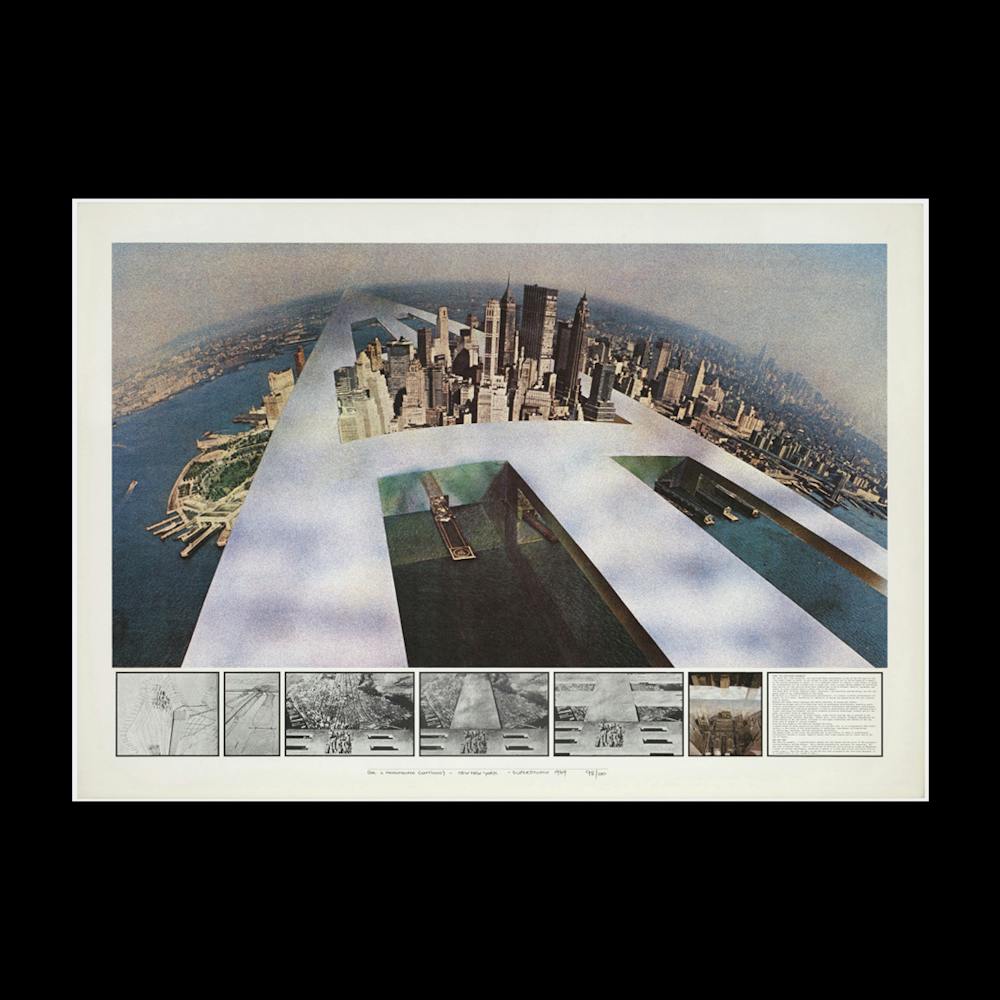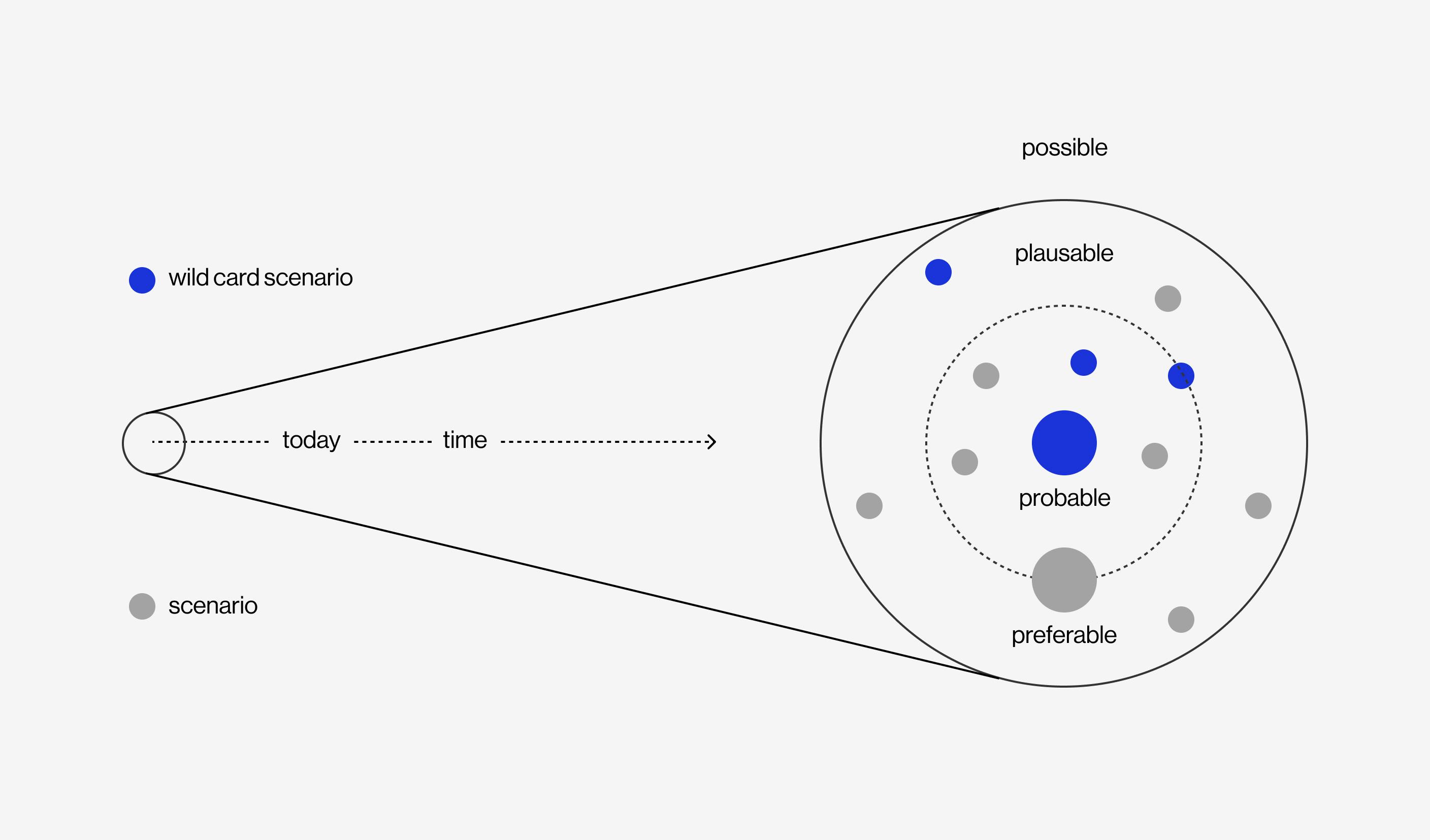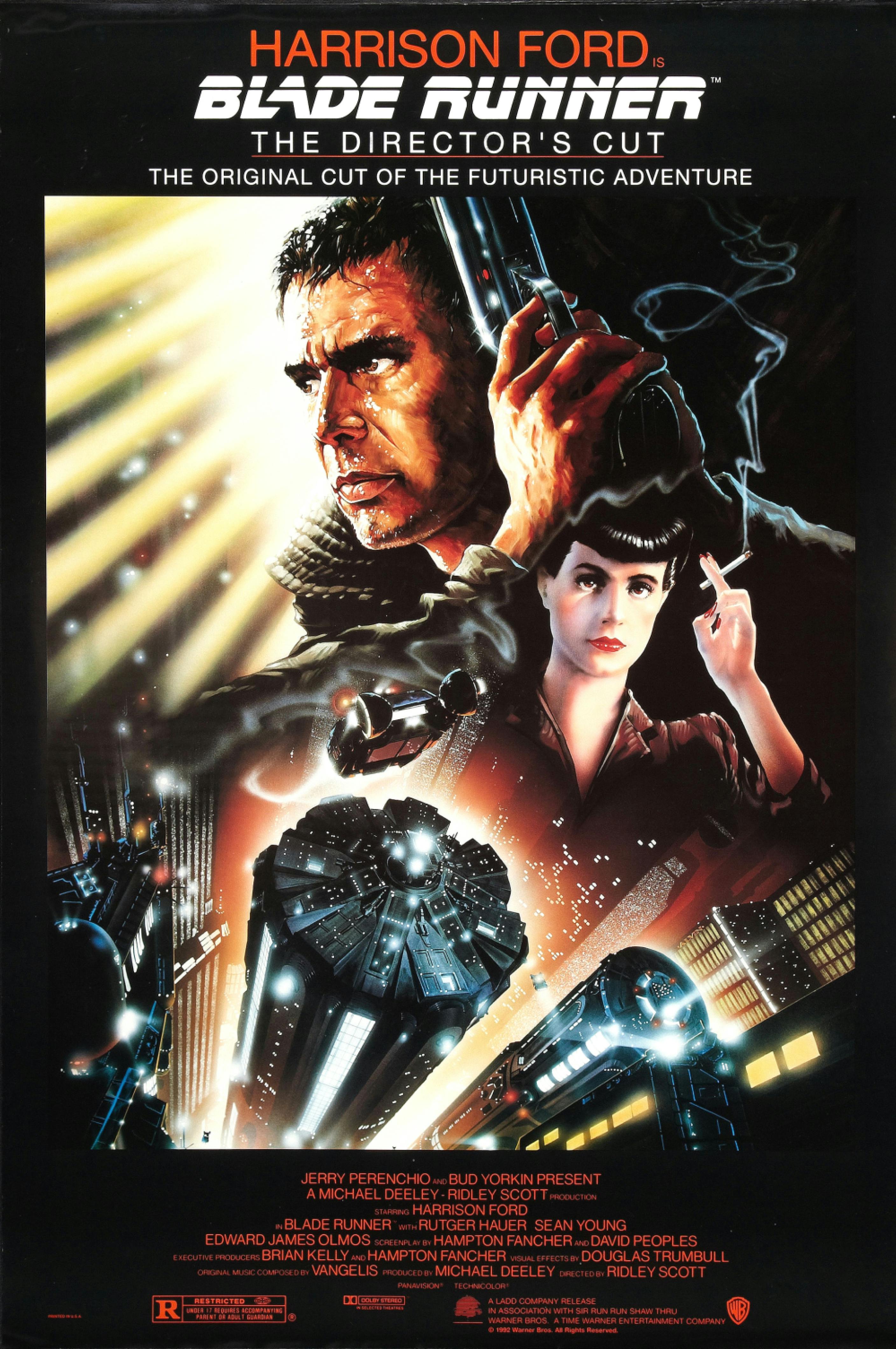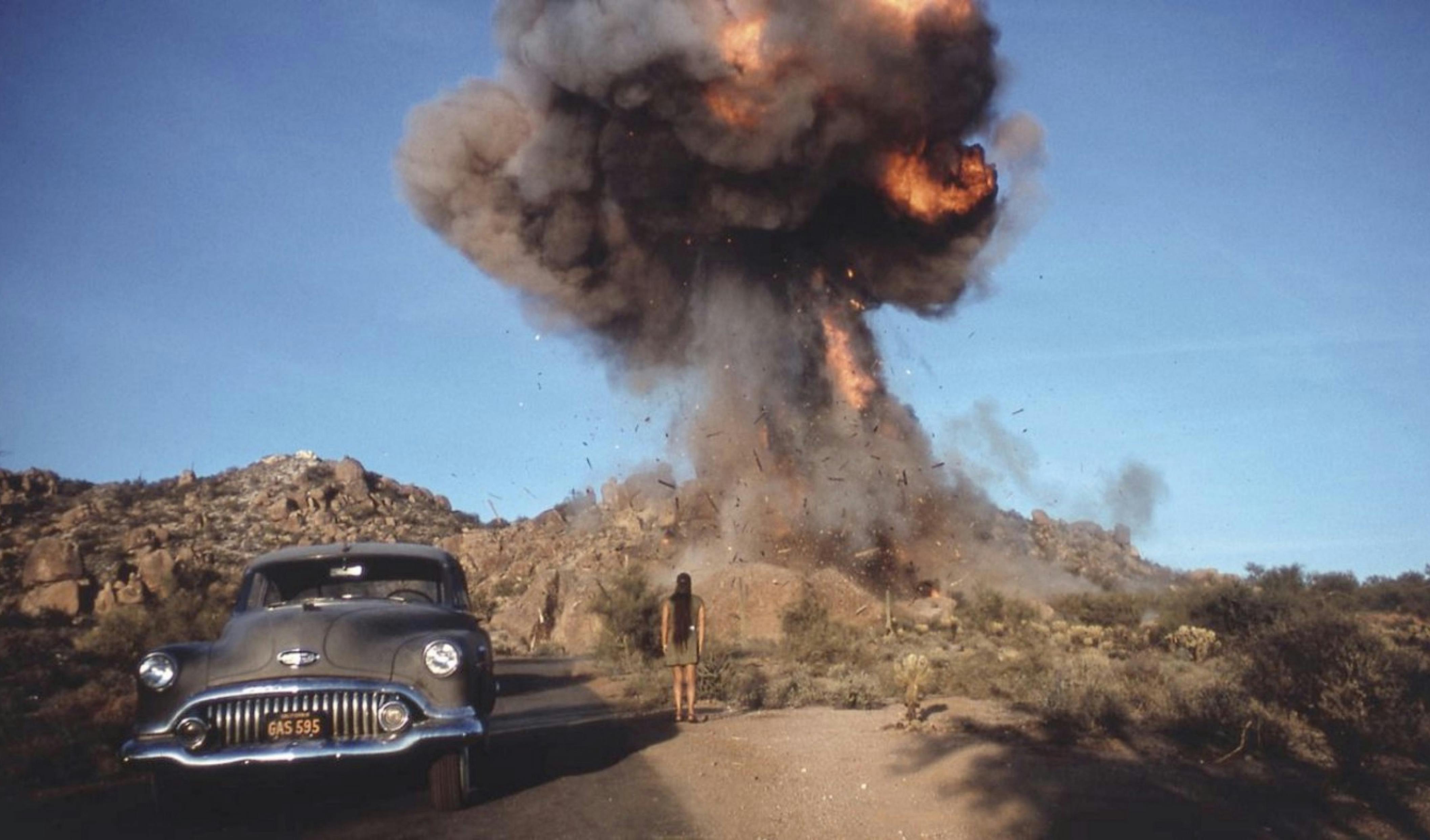Has the collective experience of the pandemic reset our relationship with the future?
The fusion of architecture and cultures that comprised the cityscape of Blade Runner (1982) was a key part in how the narrative humanised the vision of the future, it provided a backdrop in which characters displaying human emotions played out a storyline that was all about time. What did that represent for our architectural futures?
Written by
Michael Smyth

As the UK begins to emerge from the third lockdown, this time armed with newfound confidence provided by the vaccines, the question remains just what will be there to greet us. What will the “new” normal, or indeed just the “normal” be like, and more critically how might our experience of lockdown change how we think about our futures?
First off, let me be clear about one thing, there is no one future that lies ahead of us. Despite what the advertisers, technology companies and governments tell us in their glossy images and videos, depicting perfect worlds where nobody argues, and life smoothly functions through the use of seamlessly integrated technology. There are in fact, many futures but the question is how might they be achieved and what is it that we imagine when we think about these futures. What are our inspirations and have these changed because of the pandemic?
Around 2009, Stuart Candy from Carnegie Mellon University presented the Future Cone as a way of depicting different kinds of potential futures. The diagram consists of a number of cones that expand out from the present into the future. Each cone represents a different level of likelihood of a particular future, from the probable, to the plausible and finally, the possible. The probable cone reflects a general space where the bulk of design occurs, much as it is today. The plausible cone represents what could happen in the future based on alternative scenarios. The widest cone in the diagram represents the possible where no matter how extreme scenarios might be, somehow futures reside in this space. Finally, the preferable although even that is not straightforward as it raises questions of preferable to who and what is the role of design to ensure that people can be part of this discourse. If the Future Cone conveys one message it is that there does not exist one future, despite what the technology companies and governments want us to believe, there are in fact multiple futures ahead.

Version of the Future Cone taken from Speculative: Post-Design Practice or New Utopia? (2016).
While the diagram conveys a myriad of possibilities held in the future, what it does lack is a grounding in the past. Paul Coulton from Lancaster University in the UK has adapted the Future Cone to directly connect the future with the past and in so doing, reminds us that the past is also contested and open to multiple interpretations. The future is not some abstract concept that can be disconnected from our pasts.
A film that captures the tensions between the past, present, and future is Ridley Scott’s 1982 film Blade Runner. In the film, androids (replicants) from a past seek out their creator in order to extend their limited lifespan, while all the time being hunted by the eponymous Blade Runner. The action is set against the backdrop of a city that is at once recognisable as being from a future, but it is also rooted in our past, the director Ridley Scott described this when he said “I’m trying to make the city as real as possible … rich, colourful, noisy, gritty, full of textures and teeming with life … this is a tangible future, not so exotic as to be unbelievable … like today only more so” (Ross, 2015).

1982, Blade Runner — Illustration by John Alvin.
The fusion of architecture and cultures that comprised the cityscape of Blade Runner was a key part in how the narrative humanised the vision of the future, it provided a backdrop in which characters displaying human emotions played out a storyline that was all about time. Indeed, the film was made in 1982 so it is a vision of a future from 39 years in the past. But also its imagined future is one that is in the past, the film was set in November 2019. On the one hand, it is a love story — boy meets girl, girl might be replicant — but it is also about the past haunting the present in the form of the replicant Roy Batty returning to confront his creator. The film is a reminder that our relationship with the past is indeed complicated.
What can visions of futures that were created in the past reveal about the motivations, concerns or desires of people? Where these particular to that time, a moment of historical curiosity or did they address more universal and enduring themes?
Peak futures
The 1960s marked a decade of great optimism, the trauma of the Second World War had begun to fade, eased by the economic prosperity that was becoming more widespread. Science was seen as the powerhouse to deliver a vision of social and economic freedom for the next generation. This was illustrated by the British Prime Minister of the day, Harold Wilson, in his speech at the annual Labour Party Conference of 1963, when he warned his audience that if the country was to prosper, a “new Britain” would need to be forged in the “white heat” of this “scientific revolution” (Francis, 2013). It was the decade that witnessed space travel and watched in awe as Neil Armstrong took those first tentative steps onto the surface of the Moon. Broadcast live on television to a worldwide audience he described the event as “one small step for man, one giant leap for mankind” and with those words the Space Race was effectively ended. The achievement fulfilled John F Kennedy’s proposition in 1961 that “before this decade is out, of landing a man on the Moon and returning him safely to the Earth”.
Looking to futures that offered new possibilities wasn’t limited to science. Perhaps it was the seemingly unstoppable progress of science that inspired other creative fields of endeavour. From film making to architecture and from fashion to music, the 1960s heralded a time of change, one that questioned the accepted norms and values. Of course, the seeds of this movement can be seen in the 1950s, albeit more easily with the benefit of hindsight. For example, in the 1953 film The Wild One (Laszlo Benedek [dir]) about a motorcycle gang living outside the norms of American society when Marlon Brando’s character Johnny Strabler was asked “Hey, Johnny, what are you rebelling against?”, he replied with the prescient line “What’ve you got?”. In that moment Brando became a cultural icon on the 1950s. Similarly, James Dean in the 1955 film Rebel Without a Cause (Nicholas Ray [dir]) portrayed a character, Jim Stark, who was rebelling this time against his parents who represent the norms and values of a previous generation. In this case the rebellion is closer to home, the “outsider” is less overt than the Brando character and in many ways points to a future that lies ahead in the 1960s.

The Continuous Monument (1969–70) — Superstudio
Architectural futures
While cinema continued to reflect the mood for change among the younger generations, other disciplines began to witness these disruptions. One perhaps surprising area was the most traditional of fields, that of architecture.
What became known as Radical Design developed from an architectural tradition in Italy and centred on the city of Florence. Under the guidance of Leonardo Savioli, students at the Faculty of Architecture had the freedom to advocate a departure from the past, and their work focussed on proposing radical new ways of living. By presenting new alternatives to living, the Radical Design movement expressed the desire to break away from what they considered to be the shackles of the past and the austerity of the post-war years in Italy. The movement grew to give voice to a new generation of architects who wanted to critique the traditional methods of planning and question the very nature of what cities might become in the future. These architects adopted an explicitly speculative approach to both the critique of architecture and the envisionment of future cities.
The Radical Design movement presented visions of possible futures as a means of critique and provocation. The motivation was to break away from the past and in Florence two practices became synonymous with the Radical Design movement. One was Superstudio and the other was Archizoom, while in London Archigram contributed to the debate about the role of architecture and the form that cities might take in the future. An example of this approach was Superstudio’s Continuous Monument (1969–70). These massive structures were never intended to be built, but they adopted the semantics of architectural drawing and modelling to comment on the rise of globalisation that was emerging in the 1970s. Their premise was that given the way the world was developing, we should all live in vast anonymous megastructures where the last vestiges of local cultures would be removed. These structures were depicted as stretching across continents and through cities with the aim of acting as a catalyst for discussion and reflection on the lived experience associated with such a future.

1970, Zabriskie Point — Michelangelo Antonioni.
New futures in a time of change
By the mid 1970s the optimism for science had begun to falter and the early promise had not delivered a new reality. In 1978 Superstudio disbanded, while Archizoom had closed in 1974 with the final declaration that “architecture was dead”. This feeling is epitomised by the final scene in Michelangelo Antonioni’s (dir) Zabriskie Point (1970) when an archetypical modernist home explodes in slow motion to a soundtrack by The Pink Floyd and we witness the artefacts of consumer capitalism being transformed into particles. The final scene depicts one of the main characters driving into the sunset, perhaps representing the dawning of a new age.
The fervour and excitement that heralded in the 1960s were finally over. But why is it that the 1960s and 70s continue to exert a disproportionate influence on visions of the future? Franco “Bifo” Berardi described this effect as “the slow cancellation of the future” in the context of being unable to break free from the shackles of these decades (2011). Berardi is telling us that our expectations of the future have somehow declined. We have become habituated to the rolling versions of technology that always promise that tantalising glimpse of a future that in reality is seldom different to the present.
Marc Augé (2009) talks about non-place, such as airport terminals, places that have become generic and have lost their meaning and connection to us, places that could be anywhere in the world and it is only when you exit the terminal that you see, hear and feel the local lived experience. Berardi’s argument is that it is now also about non-time, time has become commodified and we live in an era of retro-futurism to a soundtrack of mixed by Mark Ronson.
Up to now, the horizons of the future have seemed to be tethered to ideas that emanate from this period of Peak Future. But maybe there is a glimmer of change towards the end of the first quarter of the 21st Century. Has the global pandemic of 2020 radically changed the visions of our futures? No longer are they so overtly shaped by the 1960s or 70s and somehow made current by means of distribution through the high-speed networks of today (Fisher, 2014), the collective experience of the pandemic has raised the question of what is actually wanted from the future, rather than what has been assumed is needed. There is a dawning realisation that the “new normal” is simply “the normal” and how moving forward will never quite be the same.
A tipping point has been reached for our expectations about the future — the first global event that has marked time in the new century. Suddenly our futures look different, our values, hopes, dreams, and aspirations destined never fully to return to how they were before. This was stated much more eloquently by the NY artist Jonathan Gardenhire when he said that “perhaps there is not a future in the way the future has existed in the past”. Just maybe we have all entered into new relationships with our futures.
Acknowledgments
This essay is based on a chapter produced for the book entitled Beyond Speculative Design: Past-Present-Future that was written as part of the SpeculativeEDU (Speculative Design — Educational Resource Toolkit) 2018–20 project funded under the Erasmus+ Programme of the European Union.
Works cited
- Non-Places: Introduction to Supermodernity by Marc Augé (2009)
- After the Future by Franco "Bifo" Berardi (2011)
- Ghosts of My Life — Writings on Depression, Hauntology and Lost Futures by Mark Fisher (2014)
- Harold Wilson’s “white heat of technology” speech 50 years on by Matthew Francis (2013)
- Speculative: Post-Design Practice or New Utopia? by I. Mitrović & O. Šuran (2016)
- Filmish — A graphic journey through film by Edward Ross (2015)